History of Ufa
Foundation of Ufa
After the defeat of the Kazan Khanate and the capture of Kazan by the troops of Tsar Ivan the Terrible in 1552, the Western Bashkir tribes came under the rule of Russia. In 1555-1556, the Russian state included the lands subordinate to the Nogai Horde, including the territory of today’s Ufa.
In 1556-1557, Bashkir ambassadors traveled to Moscow, where they received tsarist charters setting out the conditions for the Bashkirs’ entry into the Russian state. Tsar Ivan the Terrible recognized the Bashkirs’ right to their lands and gave guarantees of protection from military raids. For this, the Bashkirs were obliged to pay yasak (tribute) (at first with furs and honey, later with money). In 1573, the Bashkirs found it inconvenient to pay yasak in Kazan and asked the Russian tsar to build a town for them on their land and send troops to defend against raids of nomads.
On May 30, 1574, voivode Ivan Nagoy (a close relative to the wife of Ivan the Terrible) with a detachment of Moscow streltsy (firearm infantry) landed between the mouths of the Nogayka and Sutoloka rivers and founded the settlement of Ufa on the site where, according to Bashkir legend, the once major town of Turatav was situated. The first building in Ufa (church) was built on the same day and named the Trinity Church, in honor of the feast of the Trinity. Subsequently, the Trinity ravine and Trinity hill were named in honor of the Trinity.
In 1586, Ufa received the status of a town and became the administrative center of the Ufa county. With the construction of town walls and the emergence of a posad (the district of traders and artisans), the wooden fortress in the center began to be called the kremlin. Ufa turned into a center for collecting yasak from the Bashkir population, as well as parts of western Siberia and Perm the Great.
The emergence of a fortified town in the center of Bashkiria was met with hostility by the steppe neighbors of the Bashkirs (the Nogai Murzas, the Siberian Khan, and other nomads). Ufa was repeatedly attacked, but all of them were successfully repelled by the garrison.
More Historical Facts…
Ufa in the 17th-19th centuries
Throughout the 17th and first decades of the 18th centuries, Ufa remained a border fortress, located far to the southeast of the main line of fortifications of Russia, and served as a strong point in organizing the protection of state borders from the raids of neighboring nomadic peoples.
In the middle of the 17th century, the town received its stamp with the image of a running marten, as a sign of the abundance of martens in this area. Later, this image became the coat of arms of Ufa. The population of the town including the garrison numbered about 1.5 thousand people.
In May 1759, lightning struck the Mikhailovskaya Tower of the Ufa Kremlin. The old wooden fortress and more than 200 houses burned down. The fortress was not rebuilt, since there was no longer a need for it. The administrative center of Ufa arose in its place.
One of the most dramatic pages in the history of Ufa is associated with the events of the Peasant War of 1773-1775. The rebels twice approached Ufa, but failed to capture it. The outskirts of Ufa turned into an arena of fierce battles.
In 1836, the first provincial library was founded in Ufa. In 1840, the population of Ufa was about 16,500 people. In 1864, a museum was opened at the men’s gymnasium. In 1865, Ufa became the center of the Ufa Governorate. In 1890, the Samara-Zlatoust railway passed through Ufa, which played a huge role in the rise of the economic and cultural life of Ufa.
Ufa in the 20th century
At the beginning of the 20th century, Ufa was a typical provincial town, differing, however, from other surrounding provincial centers (Simbirsk, Vyatka, Orenburg, etc.) by a relatively fast pace of development. Ufa became an important administrative, economic, and cultural center of the South Urals. In 1913, the population of Ufa exceeded 100 thousand people.
Although Ufa was deep in the rear, the First World War had a huge impact on life in the town. In 1914, construction work was stopped and most of the brick factories were closed. A significant expansion of production was only at those enterprises that carried out military orders. Although the total number of workers in Ufa increased by 14.4% from 1913 to 1915, female and child labor began to be used much more widely, replacing mobilized workers. The urban infrastructure fell into decay due to lack of funds. Food prices in the first two years of the war more than tripled. In November 1916, a rationing system was introduced for flour, sugar, salt, and other goods.
During the Russian Civil War, Ufa became one of the centers of the anti-Bolshevik white movement. Over the course of two years, power changed hands several times in the town, and bloody battles took place. In 1922, the Ufa Governorate was abolished and the Autonomous Bashkir Socialist Soviet Republic was created with the capital in Ufa. The population of Ufa was about 85 thousand people.
In 1932, the first oil was produced in the region. Oil production and refining led to the economic growth of Bashkortostan. In the 1930s, the Ufa oil refinery was built in the city. In 1940, it was the largest oil refinery in the USSR (620 thousand tons of oil per year). In 1939, its population was 250 thousand people.
During the Second World War, industrial output at Ufa enterprises increased 5 times. The transformation of the city into the largest industrial center of the Urals was facilitated by the fact that in the first years of the war, about 50 enterprises from all over the country were evacuated to Ufa. More than 100 thousand evacuees came to Ufa. In 1941, in Ufa, the future writer S.D. Dovlatov was born in a family of evacuees, and in 1944 - the future violinist and conductor V.T. Spivakov.
In 1957, on the right bank of the Belaya River, the Friendship Monument was erected in honor of the 400th anniversary of the voluntary entry of Bashkiria into the Russian state. In 1959, the population of Ufa was 546,878 people.
In the post-war years, with the expansion of oil production in the republic, new oil refineries were built in Ufa. At the same time, the chemical industry and mechanical engineering were developed. In 1982, its population exceeded 1 million.
In the 1980s-1990s, Ufa became one of the centers of rock culture. In Ufa, “DDT”, a popular Russian rock band headed by Yuri Shevchuk, was founded. The famous Russian rock musician Zemfira Ramazanova is also from Ufa.
On October 11, 1990, the Supreme Soviet of the republic proclaimed the Declaration of State Sovereignty. According to it, the republic was transformed into the Bashkir Soviet Socialist Republic - Bashkortostan. On February 25, 1992, it was renamed the Republic of Bashkortostan.
Pictures of Ufa
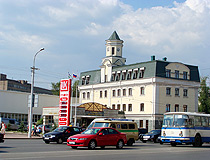
On one of the streets in Ufa
Author: Denis Shokhov
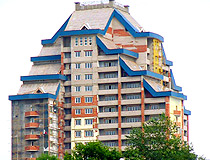
Apartment house in Ufa
Author: Gennady Ionov
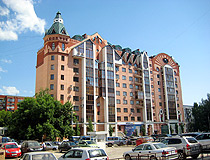
Modern architecture of Ufa
Author: Egor Mihtanuk
Features of Ufa
The name of the city comes from the name of the Ufa River. According to one version, the word “ufa” is formed from the Finnish (Perm) words “u-va” - “dark water”. In the Bashkir language, the name of the river is “Kara Idel” meaning “black river”. The City Day of Ufa is celebrated on the Day of Russia (June 12).
Ufa is the fifth largest city in the country in terms of area and length, which makes it the most spacious city with a population of over 1 million people in Russia. The length of the city from north to south is 54 km, from west to east - 30 km. The ethnic composition of Ufa according to the 2010 All-Russian Population Census: Russians - 48.9%, Tatars - 28.3%, Bashkirs - 17.1%, Ukrainians - 1.2%, others - 4.5%.
The climate in Ufa is moderately continental, rather humid. Summer is warm with slight temperature fluctuations from month to month, winter is moderately cold and long. The average temperature in January is minus 13.8 degrees Celsius, in July - plus 20.2 degrees Celsius.
The city’s economy is based on the fuel and energy and machine-building complexes. One of the largest oil refining complexes in Russia is located in Ufa. In total, about 200 large and medium-sized industrial enterprises are concentrated in this city.
Ufa is a major transport hub in Russia. Highways connect it with Moscow, Chelyabinsk, Kazan, Samara, Perm, and Orenburg. Ufa became the first city in Russia connected to Moscow by two federal highways (St. Petersburg became the second one on November 27, 2019). The federal highway M5 “Ural” runs along the southern outskirts of the city, and the federal highway M7 “Volga” ends here.
Ufa International Airport named after Mustai Karim offers regular flights to such cities as Moscow, St. Petersburg, Sochi, Rostov-on-Don, Yekaterinburg, Novy Urengoy, Krasnodar, Kazan, Novosibirsk, and others. Ufa is one of the few cities in the world for which its IATA airport code (UFA) matches the full name of the airport and city. Locals also jokingly call the airport “Three Screws” because on the top of one of the airport terminals there is an inscription “Ufa” in the Bashkir language resembling screw heads.
Public transport includes trams, trolleybuses, buses, routed taxicabs (marshrutka), taxis. The construction of the metro was canceled. Due to the length of the city and the ever-growing number of cars on its streets, moving around it can take a lot of time.
Traditional Bashkir cuisine pleases with the names of oriental dishes: kulama, tukmas, kazy, beshbarmak, uchpoch-mak, balish, gubadiya. Chak-chak and honey are served with tea. Be sure to try dairy dishes - kumis and ayran. All this can be found in the menus of Ufa restaurants. As souvenirs from Ufa, you can buy tasty Bashkir honey, which is famous for its medicinal properties, and herbal balms.
One of the distinguishing features of Ufa is the elusive fusion of cultures, a combination of Christianity and Islam. There are not so many cities in Russia where mosques are organically adjacent to Orthodox churches.
The main architectural feature of the Bashkir capital is a very small number of stone buildings of the pre-revolutionary era. Almost all cultural monuments are wooden; unfortunately their number is decreasing every year.
The oldest surviving building in Ufa is a residential one-story corner house at Oktyabrskoy Revolyutsii Street, 57/1, built by Evdokim Demidov around 1770. The house is famous for the fact that in November 1774 (according to other sources, at the beginning of 1775) the Russian commander Alexander Vasilyevich Suvorov stayed there. He was sent to Ufa by Empress Catherine II to help suppress the Pugachev uprising (the Peasant War of 1773-1775).
Main Attractions of Ufa
Monument to Salavat Yulaev - a magnificent monument dedicated to Salavat Yulaev, the national hero of Bashkortostan. Salavat Yulaev, an associate of Yemelyan Pugachev, symbolizes the desire of the Bashkir people for independence. The monument, created by the sculptor Soslanbek Tavasiev, was unveiled on the high bank of the Belaya River on November 17, 1967.
This monument is the main symbol of Ufa. You can also see its image on the coat of arms of Bashkortostan. This monument weighing 40 tons has only three points of support. The height of the monument is about 10 meters. This is the largest equestrian statue in Russia. Tubinskaya Street, 3.
Near the monument to Salavat Yulaev there is a square where holidays and other public events are held. Also not far from the monument you can find the Ufa amphitheater - a large natural slope covered with lawn grass. The square and the amphitheater are favorite places for recreation of Ufa residents and guests of the city.
The Friendship Monument (1957-1965) - a 33 meters high symbol of the peaceful coexistence of the Russian and Bashkir peoples. The first stone was laid in honor of the 400th anniversary of the voluntary entry of Bashkiria into Russia. The place for the installation of the monument was not chosen by chance. On this high hill, from which a beautiful view of the Belaya River opens, the first fortress of Ufa once stood.
The Friendship Monument is a sculptural image of two women in national costumes. Between them there is a sheathed dagger. One of the women symbolizes Mother Russia, the other - Mother Bashkiria. The monument has a bas-relief depicting the moment of the signing of a treaty between the two peoples. There are two inscriptions: “1557-1957” and “Glory to the great fraternal friendship of the Russian and Bashkir peoples!” The monument is located at the intersection of Sochinskaya and Posadskaya streets.
Mosque “Lala Tulpan” (“Tulip in Bloom”) - one of the most picturesque sights of Ufa, built in 1989-1998. It got its name due to the similarity of its two 53-meter minarets with blossoming tulip buds. These flowers, personifying freshness and chastity, are especially revered by the Turkic peoples. It is the Muslim religious center of Ufa, where Muslim holidays are held. Komarova Street, 5.
Cathedral of the Nativity of the Virgin (1889-1909) - the main Orthodox church in Ufa and one of the most beautiful architectural monuments of the city. This picturesque sky-blue church with golden domes is a real decoration of the cityscape. The height of the cathedral is 21 m, the bell tower - 47 m. Kirova Street, 102.
**Fountain “Seven Girls”. There are a lot of beautiful fountains in Ufa, but the most picturesque one is located near the Bashkir Opera and Ballet Theater (Lenina Street, 5/1). In the center of the 18-meter bowl of the fountain there is a round stone pedestal, along the perimeter of which there are seven 2-meter bronze statues of girls in national costumes. The composition is based on the national legend, which tells about seven girls, who once threw themselves from a cliff into the waters of the Belaya River so as not to fall into the hands of conquerors.
National Museum of the Republic of Bashkortostan - the largest museum in Bashkortostan and one of the oldest museums in Russia, founded in 1864. In total, the museum has 35 exhibition halls with archaeological, ethnographic, natural science, and art collections devoted to the history of peoples living in the territory of Bashkiria. The halls dedicated to the nature of Bashkortostan imitate various biological environments. One of the main treasures of the museum is an extensive numismatic collection numbering more than 16 thousand items. Sovetskaya Street, 14.
Bashkir State Art Museum named after M.V. Nesterov. Mikhail Vasilyevich Nesterov (1862-1942) was a Russian and Soviet painter, a native of the capital of Bashkiria. In 1913, he donated to the city a collection of works by artists of the early 19th and 20th centuries, taking care of the cultural education of his fellow countrymen. Here you can see early paintings of Mikhail Nesterov, collections of old Russian art and Russian paintings of the 19th - early 20th centuries, modern fine art, decorative and applied art of Bashkiria, a collection of Western European and Eastern art. Gogolya Street, 27.
Museum of Archeology and Ethnography. The collection of this museum is located in a mansion built in 1910 - the first building in Ufa constructed with elements of the Art Nouveau style (although its appearance is clearly dominated by classical and baroque features). The exposition is devoted to the archaeological and ethnographic history of the Southern Urals, as well as the culture and life of its peoples. The main treasure of the museum is the collection of Sarmatian gold items. Karl Marx Street, 6.
Botanical Garden of Ufa. In this garden, you can see about 5,500 varieties and species of flora from all over the planet, of which about 1,800 varieties of flowering plants. In the rose garden, under the shade of oak trees, you can see more than 100 varieties of roses and rock gardens with alpine Ural plants. The dendrological collection of the botanical garden has about 1,500 species and forms of trees and shrubs. The greenhouse has 1,000 species of tropical and subtropical plants. Mendeleeva Street, 195/3.


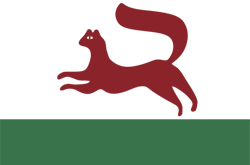
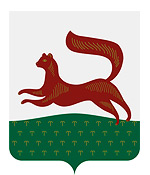
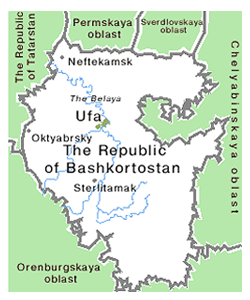



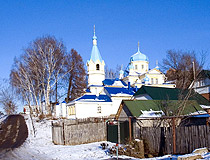
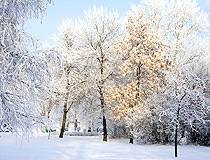
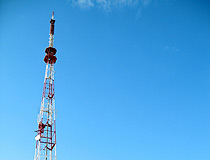
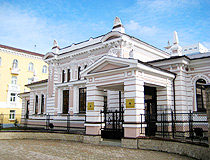
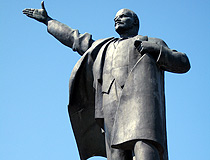
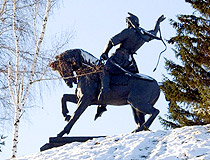
The comments of our visitors
All 5 comments